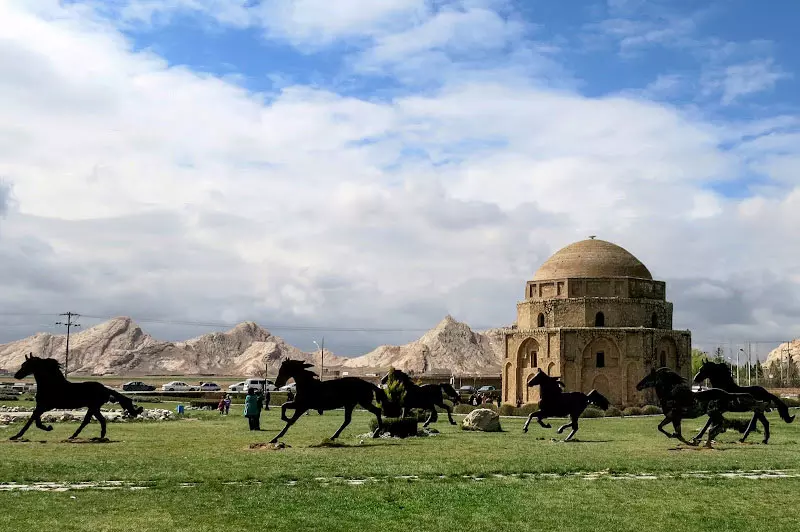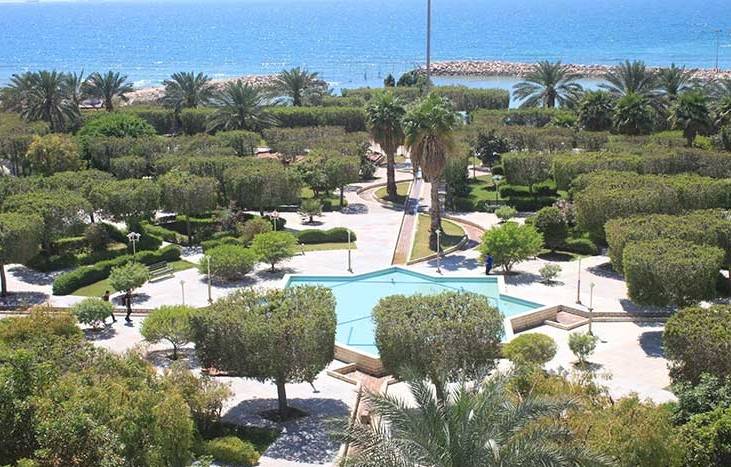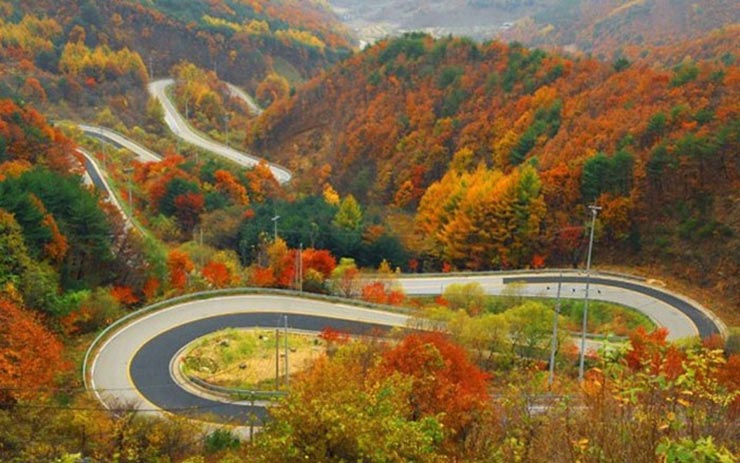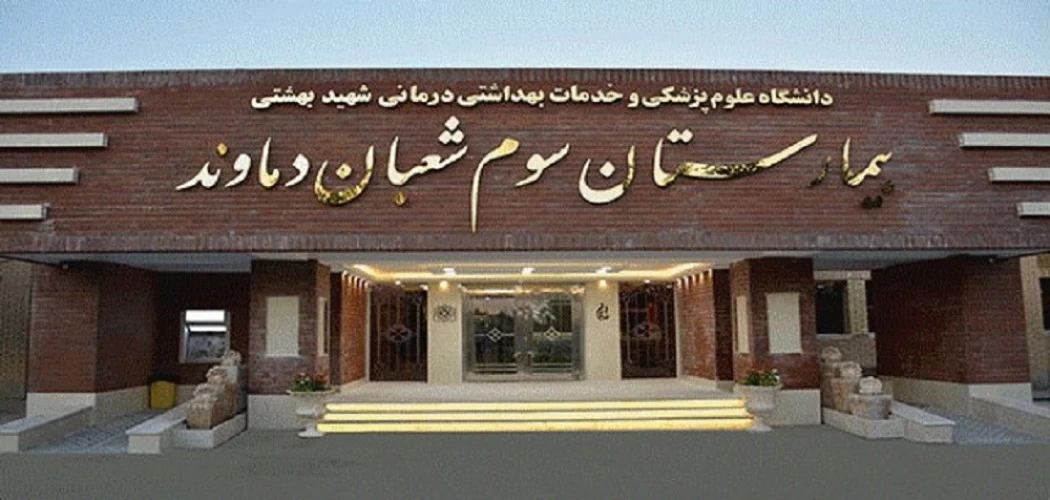Gombad-e Jabaliyeh | Everything about Gombad-e Jabaliyeh In Kerman
In the far east of Kerman, near the two cemeteries of Sahib al-Zaman and Seyyed Hossein, there stands a large and peculiar dome made of stone and gypsum, untouched by the ravages of time. This octagonal dome, known as the Gombad-e Jabaliyeh or the Fire Temple Dome, is entirely constructed of stone. Though the exact builders remain a mystery, the structure’s uniqueness is undeniable. Join GULF CITY PEDIA on a journey to Kerman and discover the marvel of Gombad-e Jabaliyeh.
Introduction to Gombad-e Jabaliyeh
Many of Kerman’s attractions are historical structures that have endured from different periods. One such monument, located in the eastern part of the city, is known by various names, including Gombad-e Jabaliyeh, Gombad-e Gabri, Gombad-e Zig, and Gombad-e Ganj.
This stone dome is situated in a lush green park. With a history shrouded in mystery, since the 1990s, it has housed ancient inscriptions and engraved stones, earning the name “Stone Museum.” Gombad-e Jabaliyeh was registered as a national heritage site of Iran in December 1937. Today, the area surrounding the dome has been transformed into a green space adorned with several statues.

Where is Gombad-e Jabaliyeh?
Gombad-e Jabaliyeh is located in the eastern part of Kerman, along one of the streets in the city’s historic district, at the foothills of the Sahib al-Zaman Mosque mountains.
Address: Kerman Province, East Kerman, Shohada Street (View on Map)
Distance to the Clock Museum: 2.3 km
Distance to Ganjali Khan Bathhouse: 4.5 km
Distance to Vakil Bazaar: 4.4 km
Distance to Ardeshir Castle: 3.5 km
The History of Gombad-e Jabaliyeh
The history and purpose of Gombad-e Jabaliyeh remain uncertain. Some believe it was a Zoroastrian fire temple or the tomb of a Zoroastrian individual, while others claim it is the burial place of Seyyed Mohammad Tabashiri. However, some sources dispute this latter theory.
European researchers, like Hillenbrand, attribute the dome to the Seljuk period, but this theory seems unlikely. The name “Jabali” is a derivative of “Gabri,” where the Persian letter “G” has transformed into “J,” suggesting that the structure might predate Islam and could have been a Zoroastrian or Gabri construction. However, its architectural style does not fully align with that of traditional fire temples.
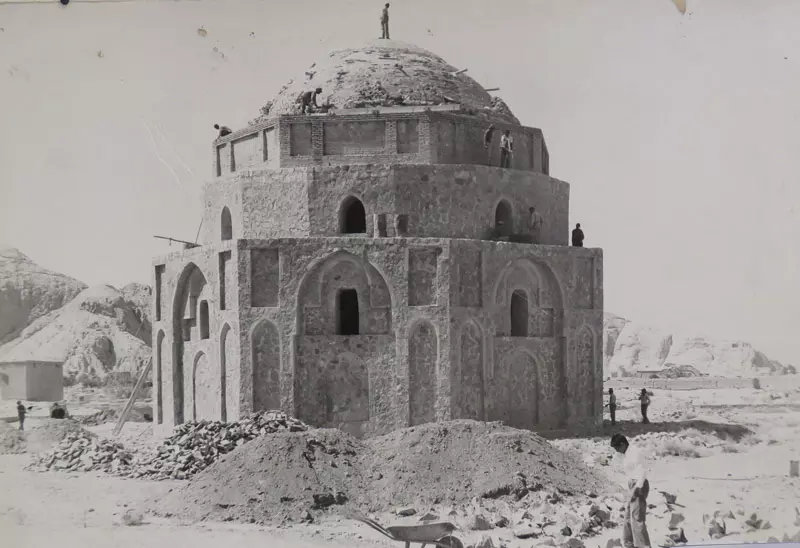
Some believe that while the dome dates back to the late Sassanian period, it may have been restored in the early Islamic era. Another possibility is that it was built in early Islamic times, inspired by Sassanian architecture. The structure underwent repairs during certain periods, including under the Seljuk ruler Mohammad bin Elyas. The photo below, taken by the British consulate 110 years ago, shows the dome next to a hill, which might explain its preservation from natural disasters like floods.

Architecture of Gombad-e Jabaliyeh
The octagonal Gombad-e Jabaliyeh is entirely made of stone, with a foundation that reaches three meters in width at its base. Each of its eight sides originally had a two-meter wide door, but recently, to strengthen the structure and prevent further damage, all but one of these doorways have been sealed with stone. The walls are constructed from rough-cut stone with a mixture of gypsum on the outside and lime on the inside. According to legend, instead of water, camel milk, egg whites, and ash were used in the construction of the dome, which some historians and architects believe is the reason for its remarkable durability. However, this claim has not been definitively proven.
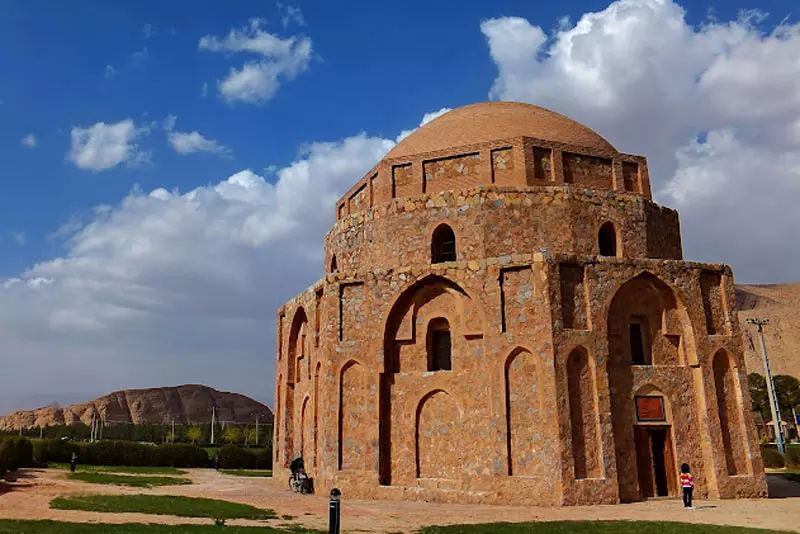
Octagonal Design
At the base of the structure lies an octagonal shape, which forms the thick walls of the building. Each side of this octagon features a large arched recess. These arches are further enhanced by decorative niches on the sides, designed to reduce the weight of the structure. The niches are composed of rectangular or square panels above the archways and additional pointed-arch niches on either side.
Middle Rings
Between the octagonal walls and the dome itself, two transitional rings are positioned. The lower ring transforms the octagon into a sixteen-sided shape, while the upper ring returns to an octagonal form. As the structure rises, the diameter of the dome decreases. The lower layer of these transitional rings features alternating skylights, while the upper layer has three rectangular niches on each side.
Dome
The dome, built from brick, has a stone base eight meters in height, with a skylight placed in the middle. It appears that the dome was intended to have a double shell, though for one reason or another, this was never completed—either the second shell was destroyed or construction was left unfinished. The interior of the dome once featured plaster decorations, but much of the upper section has crumbled, and any lower decorations have disappeared over time.
Interior
The interior of the structure is relatively simple in terms of decoration. Pointed arches were used to transition from the octagonal walls to the circular base of the dome, and the same niches that appear outside are also present within.

Kerman Stone Museum
In 1937, Gombad-e Jabaliyeh was registered as a national monument by the Ministry of Culture. After restoration in 2004, it was converted into the Kerman Stone Museum (also known as the Jabaliyeh Treasure). The museum holds 100 pieces of carved stones and inscriptions from various historical periods.
One notable exhibit is the Aabdar Mosque Inscription from Rabar, Baft, which dates back to 425 AH (Islamic calendar). It was commissioned by Abdullah bin Yusuf during the Buyid dynasty and found on a hill called Khamroti in the Aabdar area. The inscription is made from a stone known as “Asin,” and locals hold a special reverence for it. This is one of the oldest inscriptions in the museum.
Also housed in the museum is the smallest tombstone ever found in Kerman Province, measuring 22 by 26 cm. The inscription on this tombstone consists of two sections: the border contains 19 verses and part of verse 18 from Surah Al-Imran, while the inner section includes the name and date of death of the deceased, framed within a mihrab-shaped border. The text reveals that the person buried there, Abu Ja’far Ahmad bin Hamza bin Ali, died in 541 AH.
Among other significant artifacts in the collection is the tombstone of Mirza Agha Khan, the son of Mirza Ahmad Ali Khan Vaziri, who collaborated with his father on the History of Kerman. Dr. Bastani Parizi, a contemporary historian from Kerman, noted that Mirza Agha Khan’s tombstone reads: “The passing of the late Mr. Mirza Agha Khan, son of the late Mirza Ahmad Ali Khan Vaziri, on the date of Shawwal 1317.”
Another noteworthy item is the endowment inscription of the Qanateghestan fire temple, which was transferred to the museum after the fire temple’s destruction. This inscription dates back to 1282 AH.
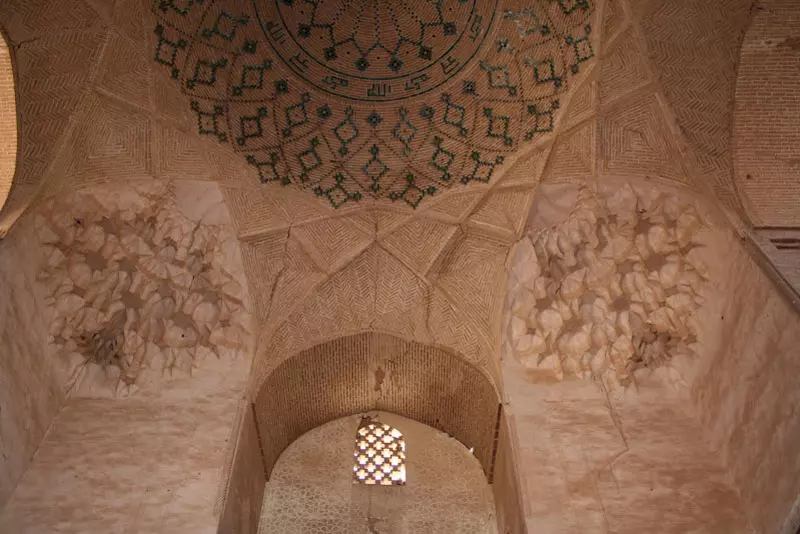
Visiting Tips for Gombad-e Jabaliyeh
If you plan to visit the exterior of Gombad-e Jabaliyeh, there’s no entrance fee, and you can visit it at any time of day.
If you’d like to explore the Kerman Stone Museum, it is open from 9 AM to 6 PM, with an entry fee of 4,000 tomans.
It’s a good idea to learn about the history of the monument before your visit, as it will enhance your experience.
When traveling to different cities in Iran, make sure to respect the local culture.
Historical monuments are the heritage of humanity. Let’s be good stewards and preserve them for future generations without causing any harm.
Frequently Asked Questions
Where is Gombad-e Jabaliyeh located?
Gombad-e Jabaliyeh is located in Kerman Province, east of Kerman, on Shohada Street.
How old is Gombad-e Jabaliyeh?
The exact history and purpose of Gombad-e Jabaliyeh are not certain. Some attribute it to the Sassanian era, while others believe it dates back to the early Islamic period.
What items are displayed in the Kerman Stone Museum?
The museum houses 100 pieces of carved stones and inscriptions from various historical periods.
What are the operating hours of the Kerman Stone Museum?
The museum is open from 9 AM to 6 PM, and the entry fee is 4,000 tomans.

